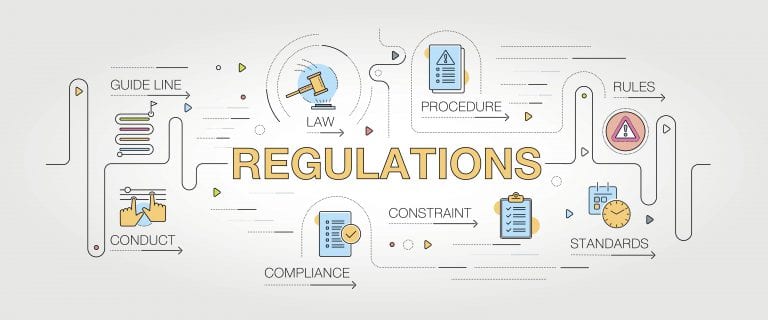Recently, I was asked what the key is to creating a robust B2B telemarketing script. It’s a good question, and after having helped develop and implement thousands of successful scripts over the years, I don’t have that 30-second elevator pitch answer to that question. Instead, I have multiple questions.
- What is the goal of the script?
- Is there an underlying goal lurking beneath the initial goal?
- Who are you contacting?
- Why are you contacting them?
- Are you selling something? If so, what?
- Is it a service or a product?
This list could go on for a while.
Many books have been written on creating calling scripts for telemarketing services. Many books address the multiple scenarios listed above, but these scenarios only begin to scratch the surface. I am not going to do that.
I will share with you five of the top things to remember when working to create a successful B2B telemarketing script.
5 Tips for a Successful B2B Telemarketing Script
1. 30 Seconds to Buy a Minute
In B2B telemarketing, you are typically calling someone who is not expecting your call. Even if you are not prospecting and calling a current customer to renew a subscription, it’s not like that customer is sitting by the phone eagerly awaiting your call. You are calling someone at work while they are presumably trying to do their job.
Most people are like me in that I don’t want to be unnecessarily distracted while working. Perhaps I am wrong in that, but I don’t think I am. So, if that is the case, you have a narrow window to capture a person’s attention in any meaningful way.
The golden rule is that “you have 30 seconds to buy the next minute of a person’s time.” Do not waste it!
The first and most common mistake in a B2B telemarketing script is having the agent ask, “How are you today?”
Managers believe that inserting that phrase into a script for agents to use helps build rapport. No, it doesn’t. It has the opposite effect.
In fact, that very phrase made the number one spot in Entrepreneur’s “Top 5 Counterproductive Questions to Never Ask on a Cold Call.”
I don’t know you. Don’t ask me how I am. At best, my eyes will roll right out of my skull. You don’t care how I am. I don’t care how you are. We don’t know each other.
It’s disingenuous. And as a result, you have wasted 20 seconds of your 30 seconds to capture my attention in a meaningful way. At worst, you have caught my attention but negatively, and you have no time to turn this into a productive call for anyone.
2. Don’t Monologue
You have a product to sell, and you have to explain the concept, capture the imagination, give five reasons why this person needs the product, and don’t forget that special promotional offer. Before you know it, your script is seeping onto a second page in a block-like format in 11-point font.
If you want to put someone into a coma, that is the recipe. People don’t like to be “talked at” and don’t tend to respond when they get the impression that someone is just reading a script.
You have to break it up and build in some engagement and consultative questions when appropriate. It’s less about building a “script” and more about creating an “agent-controlled conversation.”
It’s important to note that engagement and consultative-based questions in your script don’t mean you have to sacrifice structure. It’s not a binary situation; you can build a script that allows your agents to create engagement without sacrificing structure.
Create a compelling introduction that leads into an engaging question. Let the customer’s response dictate where the script should go next, but plan for the likely positive or negative response accordingly.
3. Understand the Players
This point is two-fold. First of all, you have to realize that not every B2B telemarketing script can be executed in the same manner by each person. In an ideal world, that is true, but it’s far from the case all of the time.
Specific agents are going to pull off a conversational script better than others. Those same agents may struggle if you ask them to follow a script verbatim. And vice versa.
Hopefully, you can tailor your team around the needs and message of the program. If not, you need to carefully consider your approach and execute it if the team you have can.
Additionally, you have to consider your audience. Is your message going to resonate with whom you are attempting to reach? Is the offer compelling to that person? Are you selling a product that solves a problem for the prospect? Is it affordable? This is where quality assurance is vital.
A good quality assurance department is not just focused on the individual they are listening to and is listening to see what is resonating with the target market.
Do you have the correct market targeted? You need to truly understand your audience’s questions when creating a script and monitor those questions once in motion.
4. Call to Action
In many cases, I would refer to this as “asking for the sale.” However, depending on the script’s objective, perhaps that isn’t the same call to action.
A call to action is the biggest no-brainer on the list but one that is still one of the most common coaching areas for agents. In turn, sometimes this issue has more to do with ensuring you have a good call to action in the script itself.
I can’t tell you how many spotless presentations I have heard over the years that ended up being for naught due to simply not asking for the sale. It’s pretty simple; you won’t get a yes if you don’t ask!
5. Test It!
It’s rare to create the perfect script right out of the gate. You have to carefully listen to how the message is resonating and what people are or are not responding to. Then, adjust accordingly.
When you have found that perfect script, don’t be fooled into thinking that it will be perfect forever. Your audience will likely change over time, and a periodic review is essential.
Experts in B2B Telemarketing Services
Nathan Teahon is a Strategic Account Manager for Quality Contact Solutions. Nathan is responsible for ensuring client success for one of QCS’ largest clients and for overseeing the QCS At-Home Management Team. Prior to Quality Contact Solutions, Nathan worked for a Top 50 Call Center company based in the Midwest. Nathan’s experience has run the gamut with stints in Quality Assurance, Program Management, Account Management, and Call Center Management. His diversity of call center experience lends itself well to supporting a wide variety of clients and their unique requirements. Nathan can be reached at nathan.teahon@qualitycontactsolutions.com or 516-656-5133.









